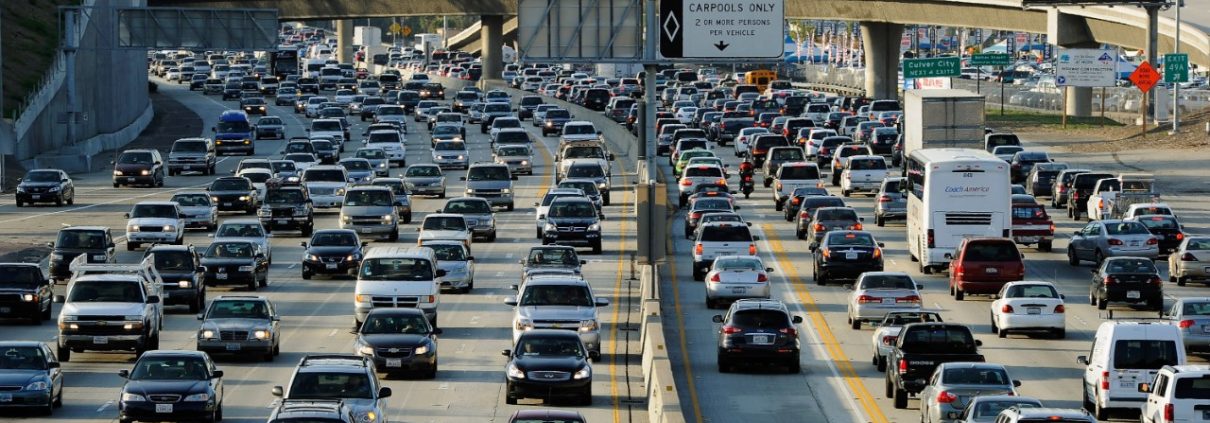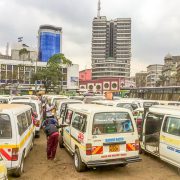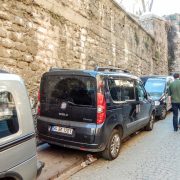Is Los Angeles the World’s Most Congested City? Sure, But What Gives?
Housing Experts Say Things about Transportation Planning
By Paavo Monkkonen and Vinit Mukhija, FCL’s of Global Urbanization and Regional Development, and Professors of Urban Planning
According to INRIX latest “Traffic Scorecard“, Los Angeles is the most congested city in the world. But what does that really mean? Do we have the longest commutes? Do we have the slowest road speeds because of traffic? No. This report defines congestion as “a speed below 65 percent of the free-flow speed, which is defined as the typical uncongested speed on that road segment.” OK, so that is a measure of congestion, but does that really matter? Well sure, nobody likes driving at 65% of free-flow speed. But it gets more complicated (as most things do).
Congestion is one measure of accessibility, but not necessarily a good one. As many transportation planning scholars have argued, accessibility is what matters—how long it takes to get to our jobs, schools, and amenities we frequent. On these indicators Los Angeles does better. LA has the 24th longest commutes in the world. But this is not good enough! As my colleague Mike Manville put it, “In a lot of congested cities it’s tough to drive, but the same density that creates congestion also means you may not have to drive very far. In many places it also means that you have more alternatives to driving. What makes LA stand out, in some ways, is that it has the density to make driving miserable but does not yet have the other options, and people still have to drive far.”
We should also see congestion as an indicator of the success of agglomeration economies. Cities that are doing poorly economically are places that don’t have congestion. Se we need to balance the time lost sitting in traffic with the benefits—the social and economic vitality—that come with agglomeration. This would very much change how we view the “costs of congestion”.
Another problem inherent in the INRIX Traffic Scorecard is its assumption that congestion leads to lost productivity. As international transportation expert Erick Guerra puts it “Delay is not the same thing as economically harmful congestion, where the marginal cost of each additional driver on the streets is higher than that person values their trip. No one expects to move at free flow speeds during daylight or evening hours in Los Angeles or New York. As Brian Taylor argues, “people’s actions suggest that they don’t really mind congestion as much as they let on.” Los Angeles is the second biggest metropolitan area on the United States and the third biggest metropolitan economy in the world (Brookings, 2015). Since most of the world’s major cities have this same problem, should we just accept it? No! We can do something about it.
Four broad changes could reduce congestion in Los Angeles. The first is that we need to build more housing near the transit facilities we have, and closer to the jobs and amenities to which people are driving. Recent, massive investments in metro infrastructure will be severely underutilized if we do not change land uses near them. Second, we need more transit facilities. Third, we need to stop providing parking with every development. Parking requirements produce auto-oriented density, and this creates congestion. Finally, and most directly, we could start charging people to use road space during peak travel times.
References:
“Global city GDP 2014”. Brookings Institution. Retrieved 8 May 2015.











